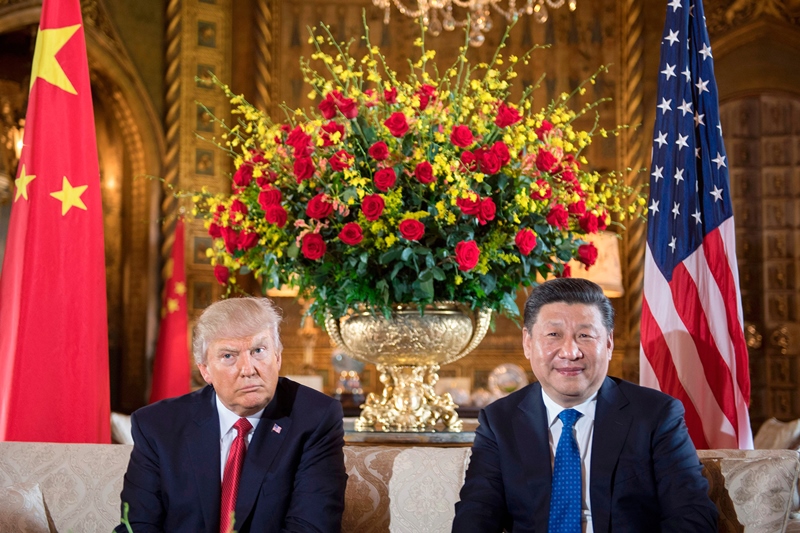“The trade conflict is really a war against China’s rise, to see who has the greater stamina. This is absolutely no time for irresolution or reticence.”
This is how Chinese authorities, in a leaked circular, outlined to state media how they should cover the trade spat with the US. The economic fight of the century has now begun. After months of threats of tariffs, on July 6th the US imposed a 25% duty on $34 billion worth of Chinese imports. In retaliation China imposed tariffs on politically sensitive US agricultural imports. In response to the Chinese response, on July 10, the US trade representative launched a two-month process for imposing tariffs on a further $200 billion in imports from China. Whilst negotiations have been on-going between the US and China to find common ground, the underlying competition between the world’s two largest economies is really about the sitting global hegemon trying to deal with the rising power. This truly is the opening battle for economic and political supremacy for the 21st century.
For decades the US has viewed China as a paper tiger, a nation with plenty of potential but steeped in backwardness, poverty and communism. The US with political skill was able to lure China from the Soviet Union in the early 1970’s, whom China always had difficult relations with and divide the Eastern camp. Most communist leaders realised by the 1970’s that Communism had failed to develop China and had in fact caused the nation colossal economic problems. Turning to the US during the Cold War Chinese leaders hoped they would get access to modern technology, skills and expertise.
During the 1990’s and after the collapse of the Soviet Union in 1991 the US did not consider China a threat and considered its prospects rather bleak. The Clinton administration (1991-2001) viewed China as a partner in the post-Soviet world, especially its cheap labour, which US corporations were looking to exploit.
But this all changed when George W. Bush came to power in 2001 surrounded by the neocons who were looking to make the 21st century the American century. Condoleezza Rice wrote in an article for the Foreign Affairs Magazine in 2000: “China resents the role of the United States in the Asia-Pacific region. This means that China is not a “status quo” power but one that would like to alter Asia’s balance of power in its own favor. That alone makes it a strategic competitor, not the “strategic partner” the Clinton administration once called it.” US policy makers during the Clinton era viewed the best way to control China was through engaging it and giving it access to some US technology. The neocon administration faced a China whose economy has passed the $2 trillion mark and who was scouring the world for energy and resources. This new-found wealth caused great concern in the East Asia region, especially when China began to lay claim to the region’s waters, artificial islands and reefs. US policy makers viewed containment as the best way to curtail any ambitions China might have, it used the surrounding nations of South Korea, Vietnam, Japan, Taiwan and India with arms deals to contain any break out by China.
But today, containment has clearly failed. China’s economy has grown 12-fold and in 2016 surpassed America’s GDP. The US has been the world largest economy every year since 1881. China is today the number one trade partner for 138 of the world’s 200 nations, making it the world’s largest trader. To further integrate the world into China’s colossal trade machine China announced in 2013 the Belt and Road Initiative (OBOR) which will see up to $4 trillion investment in Eurasia’s infrastructure. China has now launched alternatives to the US dominated IMF and World Bank – the Asian Infrastructure Investment Bank (AIIB). This wealth and numerous projects means China and the US are on a collision course.
President Trump in his new National Security Strategy in December highlighted China’s growing technological prowess as a threat to US economic and military might. The US is looking to restrict Chinese investment and acquisitions in strategic sectors such as technology. In addition, the United States is cracking down on Chinese tech companies. On April 16 2018, the US Commerce Department reinstated an order barring US companies — including tech giants such as Google, Qualcomm and Intel — from selling parts, software and equipment to the Shenzhen-based telecommunications giant ZTE Corp. ZTE is one of the most important companies in China’s ongoing tech innovation strategy. An estimated 25% to 30% of its supplies and components come from US companies.
The US is targeting the economic sectors and technologies China’s rise has depended on. Unlike the other large economies, 20% of China’s economy is based on exports. The US is the largest destination for Chinese exports by far – in 2016, 23% of Chinese exports, worth roughly $481 billion, ended up in the United States. America GDP is $18.5 trillion, exports are $1.4 trillion – under 12%. The US imports, or China exports to the US are largely cheap consumer goods. The US can get these from other destinations, if needed. China on the other hand will not find another consumer market that consumes goods the way the USA does.
Veteran geopolitical analyst and confidant to successive US presidents, Henry Kissinger has stated on numerous occasions that he sees improving relations with Russia as necessary due to the increasing strength of China. It is therefore no surprise that Putin and Trump, despite their rhetoric met at a summit in Finland on July 16. Amongst the many global issues, the US-Russia have to discuss Russia’s relations with China. The US wants to use Russia against China, similar to the role China played against the Soviet Union in the past. Tariffs and trade restrictions as well as creating a divide between Russia and China is the US strategy to deal with the rise of a potential future challenger to its superpower status.
Adnan Khan

